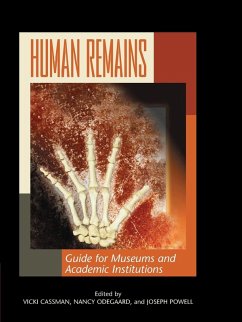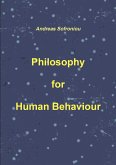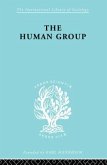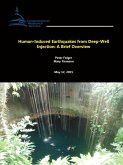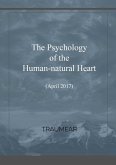Human Remains
Guide for Museums and Academic Institutions
Herausgeber: Cassman, Vicki; Powell, Joseph; Odegaard, Nancy
Human Remains
Guide for Museums and Academic Institutions
Herausgeber: Cassman, Vicki; Powell, Joseph; Odegaard, Nancy
- Broschiertes Buch
- Merkliste
- Auf die Merkliste
- Bewerten Bewerten
- Teilen
- Produkt teilen
- Produkterinnerung
- Produkterinnerung
An edited collection of valuable and timely information concerning the care and conservation of human remains in museums and academic institutions. With a foreword by Brian Fagan.
Andere Kunden interessierten sich auch für
![SURFING SCIENTIST 40 SUPER HUMAN BODY SURFING SCIENTIST 40 SUPER HUMAN BODY]() Ruben MeermanSURFING SCIENTIST 40 SUPER HUMAN BODY12,99 €
Ruben MeermanSURFING SCIENTIST 40 SUPER HUMAN BODY12,99 €![Philosophy for Human Behaviour Philosophy for Human Behaviour]() Andreas SofroniouPhilosophy for Human Behaviour12,99 €
Andreas SofroniouPhilosophy for Human Behaviour12,99 €![The Human Group The Human Group]() George C. HomansThe Human Group61,99 €
George C. HomansThe Human Group61,99 €![International Human Rights International Human Rights]() Andreas SofroniouInternational Human Rights25,99 €
Andreas SofroniouInternational Human Rights25,99 €![Human-Induced Earthquakes from Deep-Well Injection Human-Induced Earthquakes from Deep-Well Injection]() Peter FolgerHuman-Induced Earthquakes from Deep-Well Injection16,99 €
Peter FolgerHuman-Induced Earthquakes from Deep-Well Injection16,99 €![The Psychology of the Human-natural Heart The Psychology of the Human-natural Heart]() TraumearThe Psychology of the Human-natural Heart9,49 €
TraumearThe Psychology of the Human-natural Heart9,49 €![The Biology of Fungi Impacting Human Health The Biology of Fungi Impacting Human Health]() Wa ShiptonThe Biology of Fungi Impacting Human Health21,99 €
Wa ShiptonThe Biology of Fungi Impacting Human Health21,99 €-
-
-
An edited collection of valuable and timely information concerning the care and conservation of human remains in museums and academic institutions. With a foreword by Brian Fagan.
Produktdetails
- Produktdetails
- Verlag: Altamira Press
- Seitenzahl: 332
- Erscheinungstermin: 14. August 2008
- Englisch
- Abmessung: 280mm x 210mm x 18mm
- Gewicht: 815g
- ISBN-13: 9780759109551
- ISBN-10: 0759109559
- Artikelnr.: 24886313
- Herstellerkennzeichnung
- Libri GmbH
- Europaallee 1
- 36244 Bad Hersfeld
- gpsr@libri.de
- Verlag: Altamira Press
- Seitenzahl: 332
- Erscheinungstermin: 14. August 2008
- Englisch
- Abmessung: 280mm x 210mm x 18mm
- Gewicht: 815g
- ISBN-13: 9780759109551
- ISBN-10: 0759109559
- Artikelnr.: 24886313
- Herstellerkennzeichnung
- Libri GmbH
- Europaallee 1
- 36244 Bad Hersfeld
- gpsr@libri.de
Vicki Cassman is Assistant Professor of Conservation at the University of Delaware. Nancy Odegaard is Professor of Anthropology at the University of Arizona as well as a conservator at the Arizona State Museum.Joseph Powell is Assistant Professor of Anthropology at the University of New Mexico, Albuquerque and a physical anthropologist.
2 Foreword
Chapter 3 Introduction: Dealing with the Dead
Chapter 4 Ethics of Flesh and Bone, or Ethics in the Practice of
Paleopathology, Osteology, and Bioarchaeology
5 American Association of Museums Position Statement
Chapter 6 Policy
7 Example Mission Statement for a University Collection
8 Websites of Interest with Sample Policies
Chapter 9 Condition (Assessment) of Osteology Collections
10 Access and Documentation of Collections in Law Enforcement Agencies: A
Case Study
11 Condition Glossary
12 Common Vocabulary for Addressing Body Position or Orientation
Chapter 13 Examination and Analysis
14 Padding and Support Materials
15 Recommended Basic Tool Usage
16 Beanbags for Support and Cushioning
17 Temporary Markers for Indicating Bone Landmarks during Metric Analyses
18 General Considerations in Casting
19 Instrumental Analysis
20 Arizona State Museum Destructive Testing Policy
Chapter 21 Treatment and Invasive Actions
22 Mexicans Clean Bones to Honor the Dead
23 The Impact of Preservation Treatments on DNA
Chapter 24 Indigenous Value Orientations in the Care of Human Remains
25 The Vermillion Accord on Human Remains
Chapter 26 Storage and Transport
27 The Osteology Box
28 Labeling Procedures from the Arizona State Museum
29 Materials Used for Storage Supports
30 Steps for an Insect Monitoring Program
31 Moving the Kennewick Man
32 Rehousing the Kennewick Remains
33 Packing Royalty
Chapter 34 Associated Artifacts
35 Conservation Conversation I-III
36 Associated Funerary Objects: Religious Votives
Chapter 37 Documentation: History and Sources of Skeletons in Collections
38 A Case Study: Colonialism and the Return of Sarah Baartman
39 Linnaeus and the Origins of Typology
40 Documentation Systems in Human Osteology
Chapter 42 Associated Records: the Kennewick Project
Chapter 43 Multidisciplinary Research Teams
Chapter 44 Fieldwork
45 Tell Hesi Biblical Site
46 Rescuing Mummies from Urban Centers in the Atacama Desert
47 Cremations
Chapter 48 Working with the Dead: Health Concerns
49 Respect for the Dead, Respect for the Living
50 Personal Protective Equipment Guidelines
Chapter 51 The Law of Human Remains and Burials
Chapter 52 Respect for the Dead, Respect for the Living
53 Guidelines for Treatment of Remains of Indian People in Archaeological
Sites
54 Spirit Man Cave: A Body of Contention
Chapter 55 Display: The Body in the Museum
56 Caring for an Egyptian Mummy and Coffin
57 Views on Displaying Human Remains
Chapter 3 Introduction: Dealing with the Dead
Chapter 4 Ethics of Flesh and Bone, or Ethics in the Practice of
Paleopathology, Osteology, and Bioarchaeology
5 American Association of Museums Position Statement
Chapter 6 Policy
7 Example Mission Statement for a University Collection
8 Websites of Interest with Sample Policies
Chapter 9 Condition (Assessment) of Osteology Collections
10 Access and Documentation of Collections in Law Enforcement Agencies: A
Case Study
11 Condition Glossary
12 Common Vocabulary for Addressing Body Position or Orientation
Chapter 13 Examination and Analysis
14 Padding and Support Materials
15 Recommended Basic Tool Usage
16 Beanbags for Support and Cushioning
17 Temporary Markers for Indicating Bone Landmarks during Metric Analyses
18 General Considerations in Casting
19 Instrumental Analysis
20 Arizona State Museum Destructive Testing Policy
Chapter 21 Treatment and Invasive Actions
22 Mexicans Clean Bones to Honor the Dead
23 The Impact of Preservation Treatments on DNA
Chapter 24 Indigenous Value Orientations in the Care of Human Remains
25 The Vermillion Accord on Human Remains
Chapter 26 Storage and Transport
27 The Osteology Box
28 Labeling Procedures from the Arizona State Museum
29 Materials Used for Storage Supports
30 Steps for an Insect Monitoring Program
31 Moving the Kennewick Man
32 Rehousing the Kennewick Remains
33 Packing Royalty
Chapter 34 Associated Artifacts
35 Conservation Conversation I-III
36 Associated Funerary Objects: Religious Votives
Chapter 37 Documentation: History and Sources of Skeletons in Collections
38 A Case Study: Colonialism and the Return of Sarah Baartman
39 Linnaeus and the Origins of Typology
40 Documentation Systems in Human Osteology
Chapter 42 Associated Records: the Kennewick Project
Chapter 43 Multidisciplinary Research Teams
Chapter 44 Fieldwork
45 Tell Hesi Biblical Site
46 Rescuing Mummies from Urban Centers in the Atacama Desert
47 Cremations
Chapter 48 Working with the Dead: Health Concerns
49 Respect for the Dead, Respect for the Living
50 Personal Protective Equipment Guidelines
Chapter 51 The Law of Human Remains and Burials
Chapter 52 Respect for the Dead, Respect for the Living
53 Guidelines for Treatment of Remains of Indian People in Archaeological
Sites
54 Spirit Man Cave: A Body of Contention
Chapter 55 Display: The Body in the Museum
56 Caring for an Egyptian Mummy and Coffin
57 Views on Displaying Human Remains
2 Foreword
Chapter 3 Introduction: Dealing with the Dead
Chapter 4 Ethics of Flesh and Bone, or Ethics in the Practice of
Paleopathology, Osteology, and Bioarchaeology
5 American Association of Museums Position Statement
Chapter 6 Policy
7 Example Mission Statement for a University Collection
8 Websites of Interest with Sample Policies
Chapter 9 Condition (Assessment) of Osteology Collections
10 Access and Documentation of Collections in Law Enforcement Agencies: A
Case Study
11 Condition Glossary
12 Common Vocabulary for Addressing Body Position or Orientation
Chapter 13 Examination and Analysis
14 Padding and Support Materials
15 Recommended Basic Tool Usage
16 Beanbags for Support and Cushioning
17 Temporary Markers for Indicating Bone Landmarks during Metric Analyses
18 General Considerations in Casting
19 Instrumental Analysis
20 Arizona State Museum Destructive Testing Policy
Chapter 21 Treatment and Invasive Actions
22 Mexicans Clean Bones to Honor the Dead
23 The Impact of Preservation Treatments on DNA
Chapter 24 Indigenous Value Orientations in the Care of Human Remains
25 The Vermillion Accord on Human Remains
Chapter 26 Storage and Transport
27 The Osteology Box
28 Labeling Procedures from the Arizona State Museum
29 Materials Used for Storage Supports
30 Steps for an Insect Monitoring Program
31 Moving the Kennewick Man
32 Rehousing the Kennewick Remains
33 Packing Royalty
Chapter 34 Associated Artifacts
35 Conservation Conversation I-III
36 Associated Funerary Objects: Religious Votives
Chapter 37 Documentation: History and Sources of Skeletons in Collections
38 A Case Study: Colonialism and the Return of Sarah Baartman
39 Linnaeus and the Origins of Typology
40 Documentation Systems in Human Osteology
Chapter 42 Associated Records: the Kennewick Project
Chapter 43 Multidisciplinary Research Teams
Chapter 44 Fieldwork
45 Tell Hesi Biblical Site
46 Rescuing Mummies from Urban Centers in the Atacama Desert
47 Cremations
Chapter 48 Working with the Dead: Health Concerns
49 Respect for the Dead, Respect for the Living
50 Personal Protective Equipment Guidelines
Chapter 51 The Law of Human Remains and Burials
Chapter 52 Respect for the Dead, Respect for the Living
53 Guidelines for Treatment of Remains of Indian People in Archaeological
Sites
54 Spirit Man Cave: A Body of Contention
Chapter 55 Display: The Body in the Museum
56 Caring for an Egyptian Mummy and Coffin
57 Views on Displaying Human Remains
Chapter 3 Introduction: Dealing with the Dead
Chapter 4 Ethics of Flesh and Bone, or Ethics in the Practice of
Paleopathology, Osteology, and Bioarchaeology
5 American Association of Museums Position Statement
Chapter 6 Policy
7 Example Mission Statement for a University Collection
8 Websites of Interest with Sample Policies
Chapter 9 Condition (Assessment) of Osteology Collections
10 Access and Documentation of Collections in Law Enforcement Agencies: A
Case Study
11 Condition Glossary
12 Common Vocabulary for Addressing Body Position or Orientation
Chapter 13 Examination and Analysis
14 Padding and Support Materials
15 Recommended Basic Tool Usage
16 Beanbags for Support and Cushioning
17 Temporary Markers for Indicating Bone Landmarks during Metric Analyses
18 General Considerations in Casting
19 Instrumental Analysis
20 Arizona State Museum Destructive Testing Policy
Chapter 21 Treatment and Invasive Actions
22 Mexicans Clean Bones to Honor the Dead
23 The Impact of Preservation Treatments on DNA
Chapter 24 Indigenous Value Orientations in the Care of Human Remains
25 The Vermillion Accord on Human Remains
Chapter 26 Storage and Transport
27 The Osteology Box
28 Labeling Procedures from the Arizona State Museum
29 Materials Used for Storage Supports
30 Steps for an Insect Monitoring Program
31 Moving the Kennewick Man
32 Rehousing the Kennewick Remains
33 Packing Royalty
Chapter 34 Associated Artifacts
35 Conservation Conversation I-III
36 Associated Funerary Objects: Religious Votives
Chapter 37 Documentation: History and Sources of Skeletons in Collections
38 A Case Study: Colonialism and the Return of Sarah Baartman
39 Linnaeus and the Origins of Typology
40 Documentation Systems in Human Osteology
Chapter 42 Associated Records: the Kennewick Project
Chapter 43 Multidisciplinary Research Teams
Chapter 44 Fieldwork
45 Tell Hesi Biblical Site
46 Rescuing Mummies from Urban Centers in the Atacama Desert
47 Cremations
Chapter 48 Working with the Dead: Health Concerns
49 Respect for the Dead, Respect for the Living
50 Personal Protective Equipment Guidelines
Chapter 51 The Law of Human Remains and Burials
Chapter 52 Respect for the Dead, Respect for the Living
53 Guidelines for Treatment of Remains of Indian People in Archaeological
Sites
54 Spirit Man Cave: A Body of Contention
Chapter 55 Display: The Body in the Museum
56 Caring for an Egyptian Mummy and Coffin
57 Views on Displaying Human Remains

